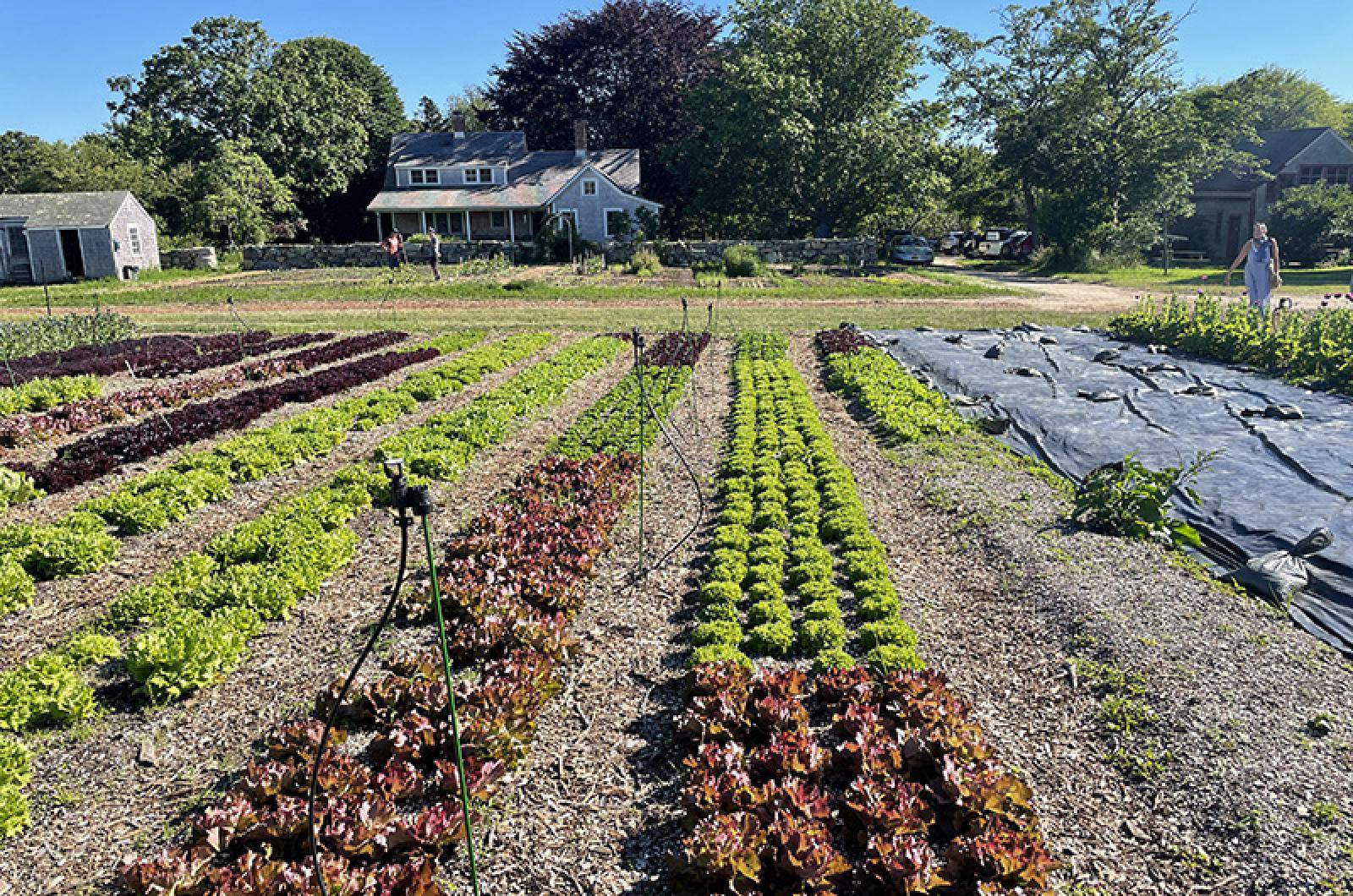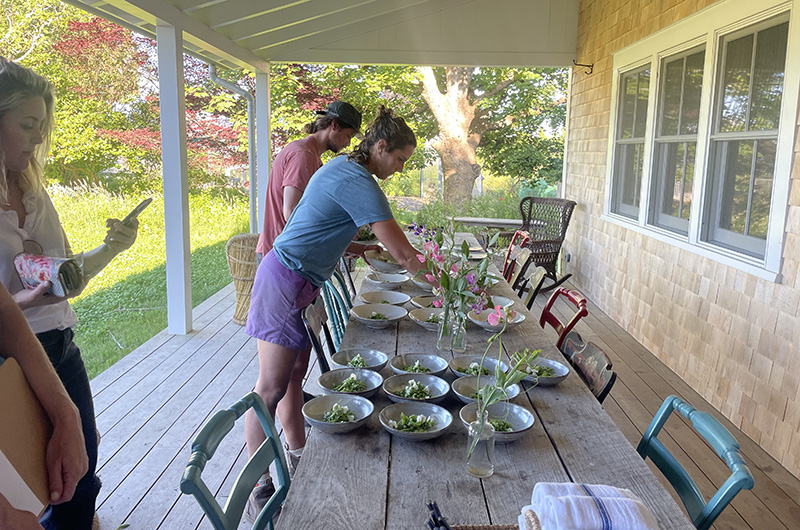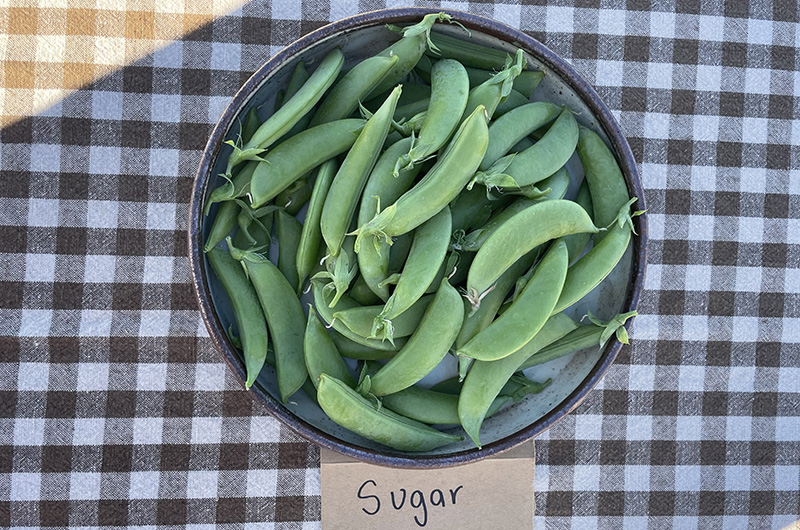The crowd was thinner at the West Tisbury Farmers’ Market this weekend, where blues guitar and harmonica accompanied a drizzle too cold to be pleasant. But many shoppers and most vendors still endured the damp chill.
“Rain or Shine since 1974,” the market’s tagline, held true. The farmer, unlike the farm writer, cannot spend a day indoors. The work must always go on: “Rain or Shine since 10,000 B.C.”
But while farmers might remain unshaken, fickle crops are not so dependable. The cold rains of early summer create a certain dankness in the fields, conducive to rot. For strawberries, now late in their season, field rot looms, as do snails.
But the torch has been passed to another summer favorite this week, the pea.
This season’s coolness has been a boon to the pea harvest. Blue cardboard pints, piled high with pods sugary and plump, have appeared in farmstands across the Island.
“Our Peas Are In” Norton Farm proclaims, accurately, their roadside sign a reliable opening bell for the season.
Sugar-snaps are the star. Raw, they are my favorite summer candy. I don’t understand those who insist on cooking them. If you must do so, a quick blanch suffices; anything more and they turn to mush.
I had the chance to sample a few varieties in the superior, uncooked form, last Wednesday at Beetlebung Farm’s annual pea tasting. It was a balmy evening, and well-attended. Farm manager Kate Woods led the event, flexing an expertise in pea genetics.
“Peas are my favorite crop to talk about,” she told the crowd. “I think they are symbolic of all the reasons we pick our different varieties, and are a great example to talk about genetics.”
She went on to demonstrate the principles of pea hybridization, learned by repetition as a lab-assistant at Cambridge (her name will appear on seed packets for a few yet-to-be-named pea cultivars). Since each pea blossom is a “perfect flower” (i.e., capable of self-fertilization) they rarely cross in nature. Humans, however, can take a young blossom, strip it down to its pistil, and use another, mature blossom as a “pollen paintbrush” to fertilize it.
That process is the ultimate origin story of the snap, shelling and snow pea varieties we sampled: the Sugar Anne (sweet, crunchy, hydrating), Maxigolt shelling pea (sweeter and almost creamy), and Oregon Giant snow pea (sweetest, with a hint of bitter leafiness). After tasting each individually, we were served a three-pea salad dressed with feta, citrus and pistachio. My compliments to the farmer-chefs.
Nick Doherty, another Beetlebung farmer, hyped up the rest of their upcoming crops to me that evening, including their first sungold harvest and a cavalcade of lettuce, though not without its difficulties.
“I’ve been noticing a lot of pill bugs in the lettuce this year,” he told me, referring to the bugs that I grew up calling rollie-pollies. They are, in fact, not insects, but isopods, a kind of terrestrial crustacean. Their gills require them to live in damp conditions, often among rotting material. The moist mulch covering Beetlebung’s fields creates near perfect conditions for them. That being said, they don’t inflict much crop damage, just a bite here and there when desperate.
Weather conditions are predicted to stay wet this week, but not to stay cool. Regardless, field work goes on, hot or cold, rain or shine.







Comments (1)
Comments
Comment policy »